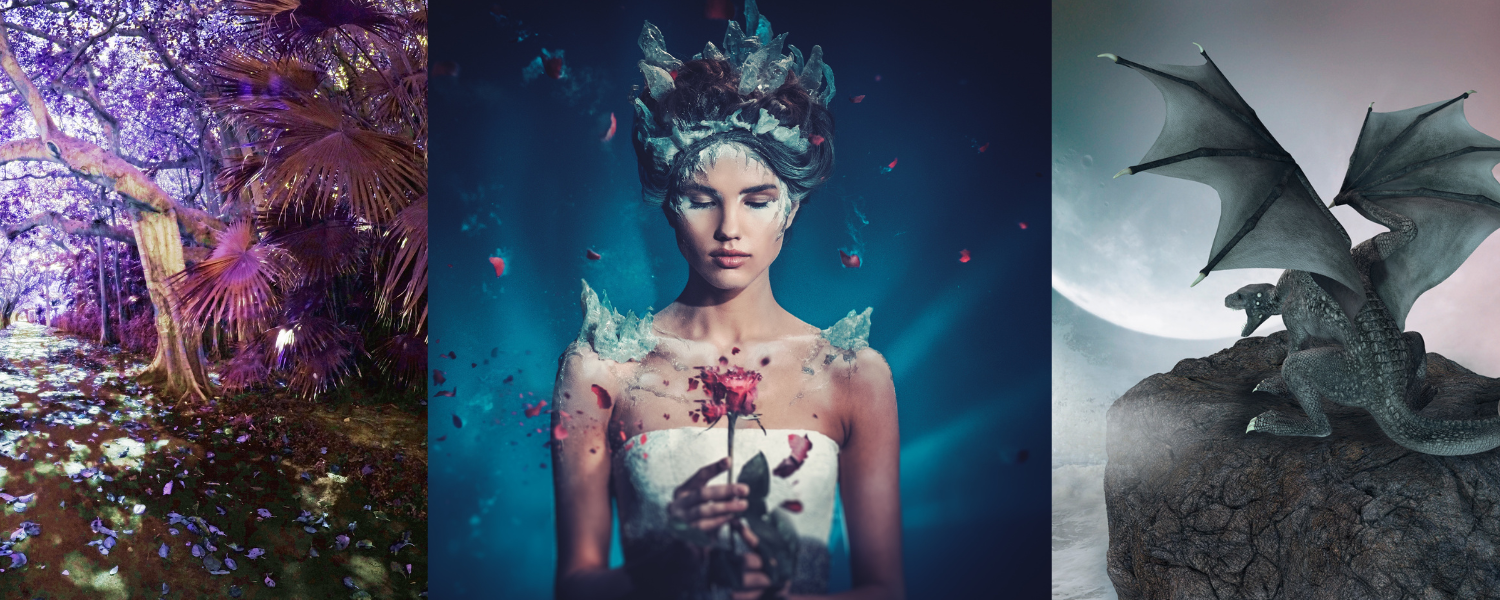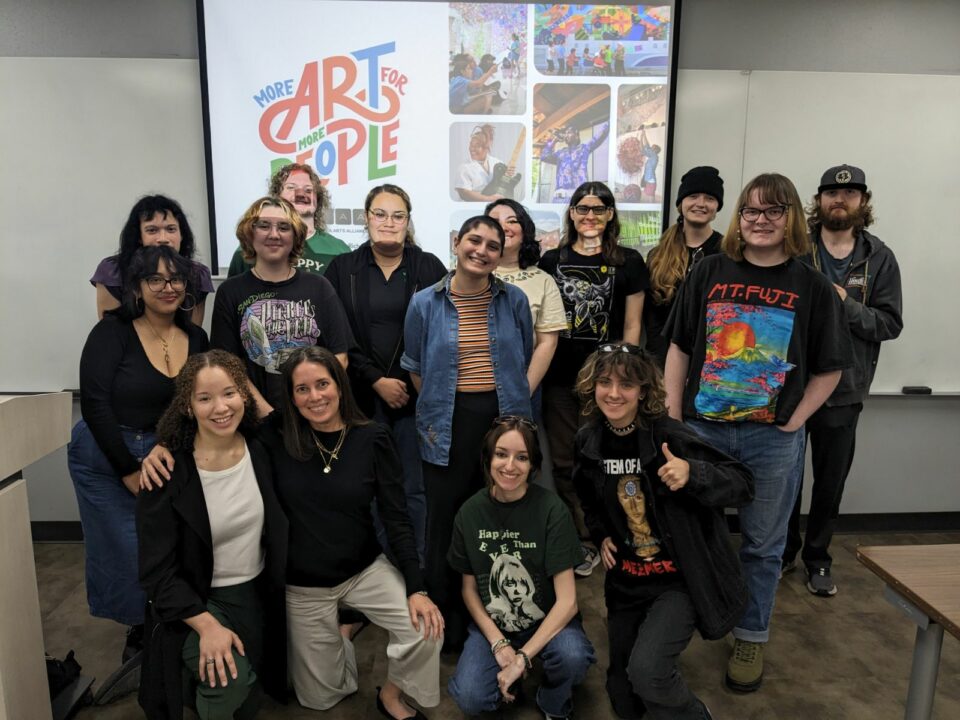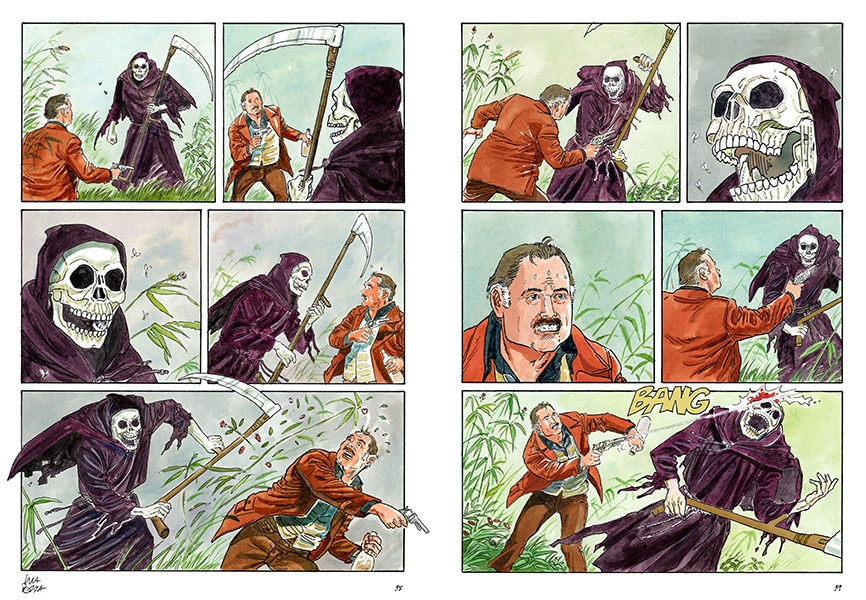Take a Look at Fan Art: The Artistry of Pop Culture
By Sarah Richardson

When you hear “fan art,” what comes to mind?
Maybe frivolity, fantasy, or amateur art? One class at the University of North Texas challenged these assumptions.
In spring 2024, I had the opportunity to collaborate with Professor Melissa Nelson on a new course being offered by the anthropology department at my alma mater, the University of North Texas (UNT). This course, Symbolic Anthropology and the Artistry of Popular Culture (“AnthroPop” for short) discussed the power of fan-created art and fiction to reflect and affect society and real-world issues. The final project for the class required students to create their own original fan art that engaged with the themes discussed in the class. These pieces were then exhibited at West Oak Coffee Bar, a local coffee shop in the town square.
AnthroPop: Fan Culture and Fan-Art
The AnthroPop course took a closer look at “fan culture” or “fandom,” the community built around a shared interest in some aspect of popular culture, with case studies coming primarily from fantasy literature, film, and gaming. Within fandom, fan-created art serves to foster community, comment on social issues, and inspire action in the real world. Fan art is uniquely positioned to do this as it often lacks the barriers to its production, distribution, and enjoyment that the traditional art world has, especially with the widespread access and connectivity of the Internet.
Community, Impact, and Accessibility
The themes of community, social impact, and accessibility concerning art relate to our work at Mid-America Arts Alliance (M-AAA). During my guest presentation, I discussed M-AAA and our programs and services, touching on these themes.

University of North Texas’s Symbolic Anthropology and the Artistry of Popular Culture (“AnthroPop”) students after Sarah Richardson’s presentation.
For instance, our newest program, Culture of Health–Advancing Together (CHAT), uses the art of the Gulfton Story Trail to promote a sense of community within the Gulfton Super Neighborhood in southwest Houston. The murals, which depict cultural themes and shared experiences, allow the geographically diverse community (more than 90 different languages are spoken in the Gulfton area) a space where they can see themselves, their stories, and their hopes for the future.
The Interchange program supports art linked to social impact, a notable mention being Erika Nelson’s 2020 Step Right Up! Voting Booth project that inspired discourse around voting access. And, of course, M-AAA’s vision of “more art for more people” is seen in the emphasis on programs like ExhibitsUSA that, through their affordable traveling exhibitions, make art experiences accessible to more audiences, both urban and rural.
More than “Mere Fantasy”
At the conclusion of the course, students were asked to describe what they learned. Professor Nelson shared the responses with me, and one in particular stood out:
“’Pop-culture’ and ‘fans’ may harbor connotations of frivolity and ‘mere fantasy,’ but it is in the fantasy where influential ways of thinking are cultivated. Through fan communities, the world can be greatly changed.” – Jack Davis, UNT Student
As an anthropologist, arts administrator, and member of multiple fan communities, I found the themes of this course and the students’ discussions immensely fascinating. I am inspired by the grassroots nature inherent in fan culture and the communities and creations that spring from media and entertainment. Fan-created art, like any art, has the potential to reflect and affect the society around us if only we look past its “frivolity” and recognize its power to connect and inspire.
More “Fan Art” for More People: Hemingway and Alice

Luca Pozza, Original art for Laguna Hemingway, 2020; felt tip pen, watercolor, and ecoline on patinated 350-grain ivory cardboard; Courtesy of Robert K. Elder. Included in the ExhibitsUSA exhibition, Hemingway in Comics.
The interactions between popular culture and art have existed in various forms longer than we may think. Take, for example, the ExhibitsUSA traveling exhibition Hemingway in Comics, which surveys how American author Ernest Hemingway has appeared across multiple fandoms (DC, Disney, Marvel). In featuring such an influential writer alongside Mickey Mouse, Wolverine, and more, comic creators have interlaced the real world with that of fiction to convey new meanings.
Likewise, the upcoming Finding Alice: Artists Exploring Wonderland Featuring Abelardo Morell, another traveling exhibition from ExhibitsUSA, illustrates how this classic heroine and her story can be interpreted and re-interpreted through various styles and adaptations, each subsequent version adding its own level of nuance.

